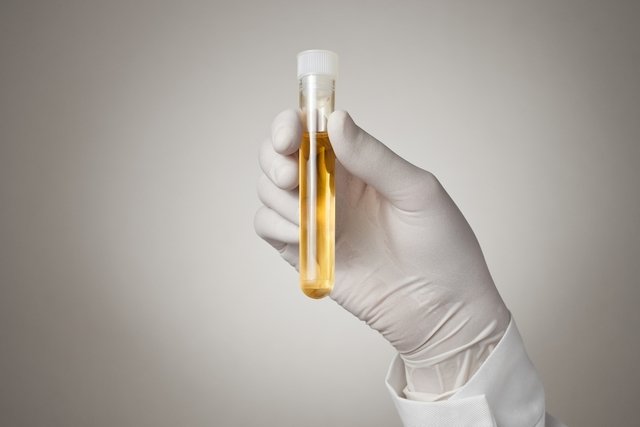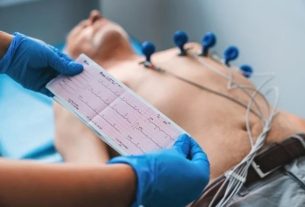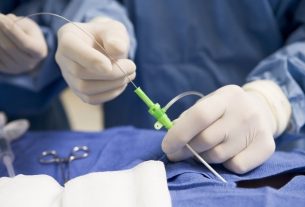The presence of fat in the urine is not considered normal and may be caused by dehydration, excess vitamins, nephrotic syndrome, ketosis or chyluria.
Fat in urine can be perceived through the cloudy or oily appearance of the urine, in addition to more specific characteristics being observed under a microscope, which is indicated in the urinalysis report.
It is important that a urologist or general practitioner is consulted when the cloudy appearance of the urine does not improve over time or other symptoms appear. Therefore, the doctor may recommend tests to identify the cause of the fat in the urine and thus begin the most appropriate treatment.

Main causes
The main causes of fat in urine are:
1. Nephrotic syndrome
Nephrotic syndrome is one of the main situations in which fat is observed in the urine and is characterized by excessive excretion of proteins due to constant damage to the blood vessels of the kidneys, which can occur as a consequence of diabetes, lupus or heart disease, for example.
In addition to the urine having an oily appearance and microscopically checking characteristics related to the presence of fat in the urine, it is possible to notice slightly foamy urine and swelling of the ankles or feet. Check out other symptoms of nephrotic syndrome.
What to do: when the presence of fat in the urine is due to nephrotic syndrome, it is recommended that treatment continue to be carried out according to the nephrologist’s guidance, with the use of medicines to reduce blood pressure, diuretics or medicines that reduce the activity of the immune system to reduce inflammation, and with a change in diet. This way, it is possible to alleviate the symptoms of the disease and improve the person’s quality of life.
2. Dehydration
In the case of dehydration, urine becomes more concentrated, which makes it smell stronger, darker and other substances can be noticed, such as fat, for example.
Dehydration can occur as a consequence of illness or due to the habit of not drinking enough water during the day, which can lead to the appearance of characteristic signs and symptoms, such as dry mouth, headache, dizziness, cramps, changes in heartbeat and low fever.
What to do: It is important to drink at least 2 liters of water or liquids per day to avoid dehydration, in addition to drinking water during and after physical activity. However, in cases of severe dehydration, it is important that the person is quickly taken to the nearest hospital or emergency room so that they can receive serum directly into their veins to restore hydration. See what to do in case of dehydration.
3. Cetose
Ketosis is a situation characterized by the production of energy from fat when there is not enough glucose in the body, and is considered a natural process in the body. Thus, in response to periods of fasting or a restricted diet, fat cells are destroyed and ketone bodies are formed that can be identified in the urine.
However, the greater the production of ketone bodies and the greater their quantity in the urine, the greater the fatty appearance. Furthermore, it is possible to know that the person is in ketosis due to the strong breath characteristic of this situation, increased thirst, decreased hunger and headache, for example. See more symptoms of ketosis.
What to do: It is recommended to avoid fasting for long periods unless recommended by a doctor or nutritionist, and it is not recommended to follow restricted diets, such as ketogenic, without supervision.
Ketosis is a natural process in the body, however it is important to pay attention to the amount of ketone bodies in the blood and urine, as an increase in the amount of ketone bodies in the blood can decrease blood pH and result in blood loss.
4. Chyluria
Chyluria is a situation characterized by the passage of lymphatic fluids from the intestine to the kidneys, resulting in the urine having a milky appearance, as well as a greasy appearance, because much of the fat in the diet is absorbed by the lymphatic vessels in the intestine. In addition to the whiter color and the presence of fat in the urine, it is also possible that there is pain when urinating or an increased urge to urinate.
What to do: Treatment for chyluria must be carried out according to the cause, which may be due to infections, tumors, kidney problems or congenital, however in all situations it is recommended that the person follow a diet low in lipids and rich in proteins and liquids.
5. Vitamin supplement
Some vitamin supplements, when consumed in excess, can change the appearance of urine, especially B vitamin supplements and vitamin C, which the body cannot store. Thus, these supplements are dissolved in water and are available for the body to use immediately. Excess vitamins that are not used are excreted in the urine, giving the urine a more oily appearance.
What to do: It is only recommended to use a vitamin supplement under medical supervision. If it is confirmed that the fatty appearance in the urine is due to the use of vitamin supplements, the doctor may advise suspending or changing the dose of the supplement.
How to know if it’s fat in your urine
The presence of fat in the urine makes the urine a little more cloudy and somewhat oily, and in some cases, the presence of fat balls in the urine may be noticed. Confirmation of fat in the urine is done by performing a urine test, the EAS, in which a microscopic observation of the urine is made, in which small balls of fat that are not visible to the naked eye are verified.

Sign up for our newsletter and stay up to date with exclusive news
that can transform your routine!



